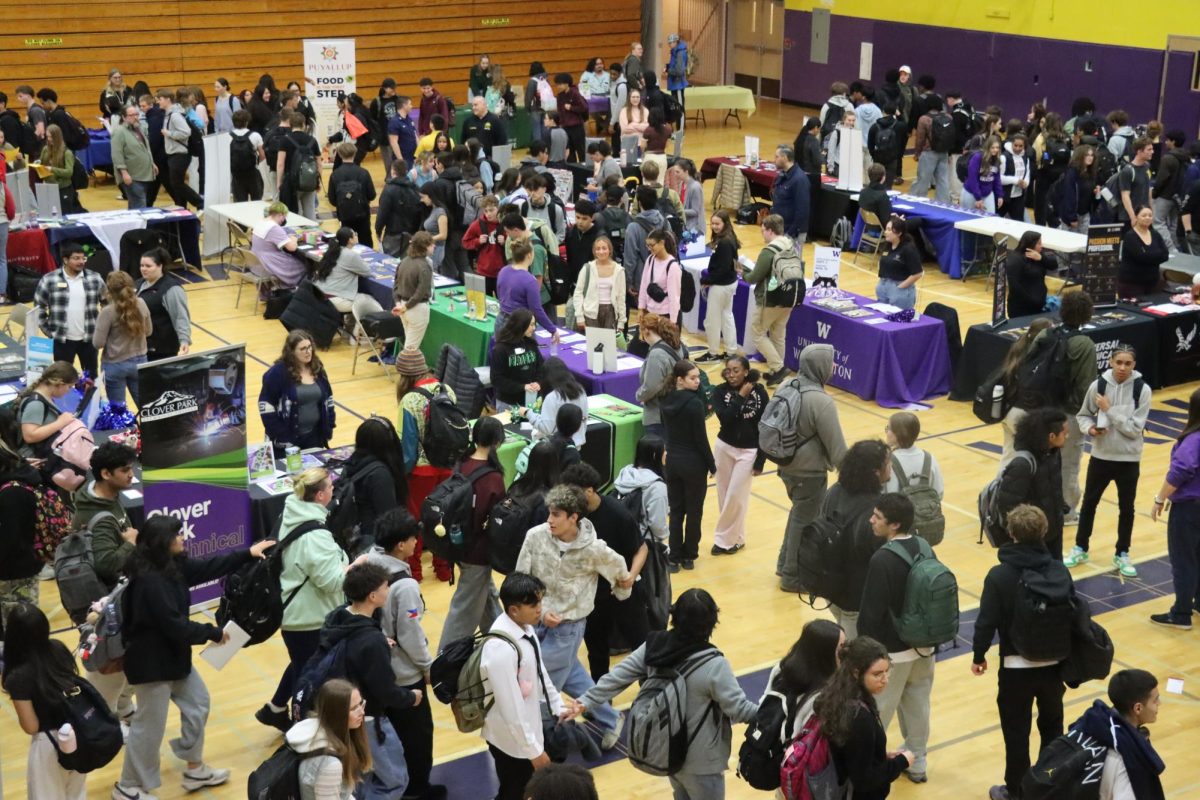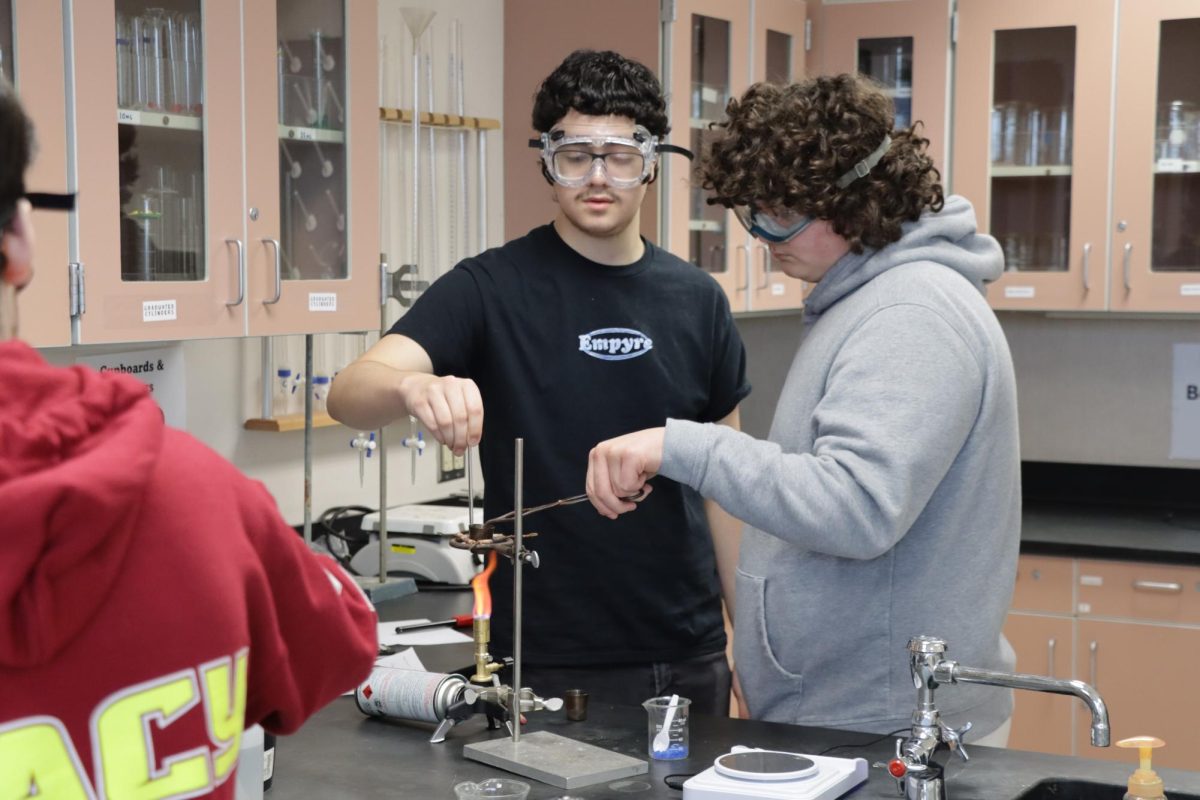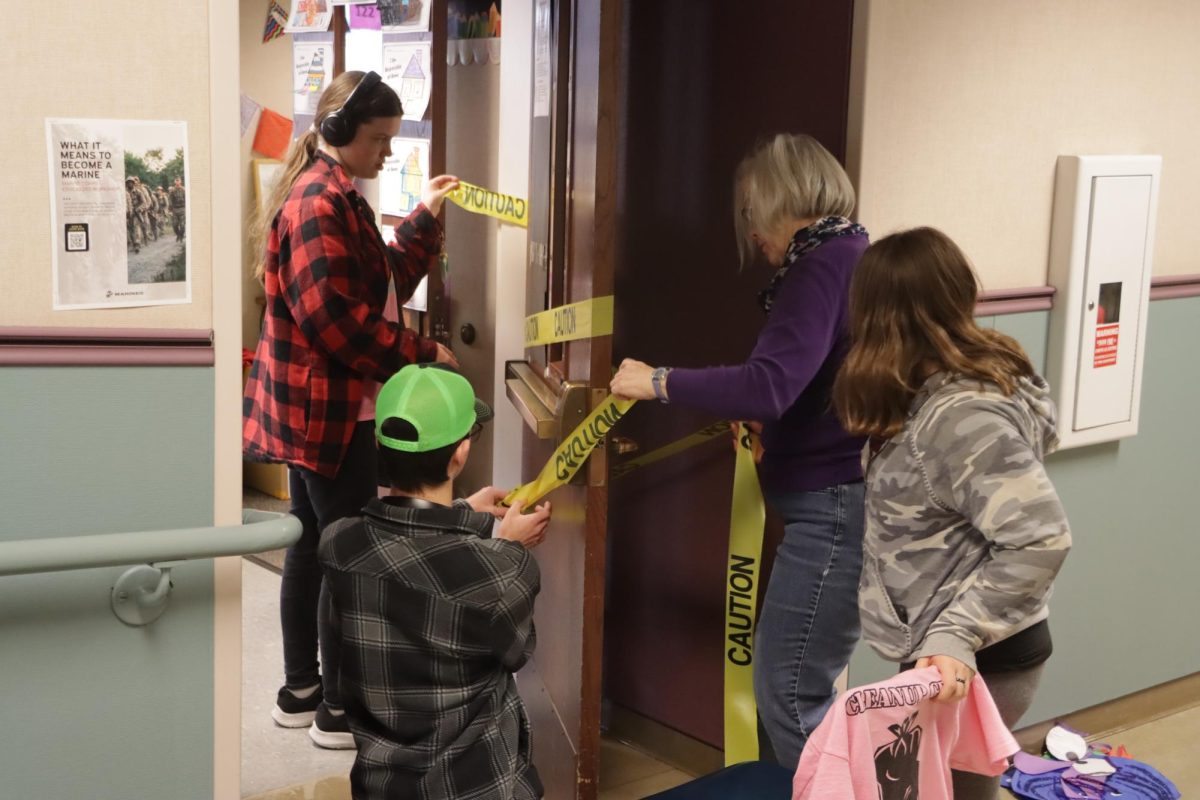You walk from your first period class to your second period and find yourself dodging peer after peer. You’ve been told to go the other way when you see large clumps of students trying to go up the stairs so you try a different route, but face the same problem.
Why does it feel like there are so many more bodies walking the halls?
The answer: An increased population and the largest sophomore class the school has seen in a while. There are 1,843 students enrolled at Puyallup High School as of Oct. 2.
With this number comes some unexpected obstacles for everyday school life.
Principal Dave Sunich says the population growth has impacted the school in a variety of ways.
“We have a really large sophomore class,” Sunich said. “This is a kind of a bubble of kids that have been coming up, we’ve known they were coming since sixth grade and before,” Sunich said.
There are more than 650 sophomores that attend the school; sophomores cannot enroll in Running Start meaning that all 650 students are at school on a consistent basis.
Having a large population with a school not used to this many students can create issues of open space, Sunich said. Hallways, stairwells, the Commons and the atrium are filled to the brim on a regular school day.
“It makes our common areas a little more full than they normally are,” Sunich said. “Our commons, or if we all want to gather in the gym or when we had our sophomore class meeting in the auditorium, the whole thing was full, pretty much every seat was packed. Then hallways and stairwells are more full than they have been the last few years.”
The Northern intersection heading to the gym building has been crowded almost every day because of people entering and exiting the building at the same time.
“We’ve got people coming in the doors, going out the doors, going up the stairs and down the stairs all in one place, It just slows it down,” Sunich said.
More students have found how to get to their classes on time and avoiding the traffic of the hallways by taking other routes.
“I think a lot of people have figured out some alternative routes that are a little bit faster. We’ve got four sets of stairwells (in the main building) so we don’t all have to go on the same one,” Sunich said. “Outside, there’s lots of different ways you can walk. Most kids are figuring out which periods they can come in that way, and which periods they need to find a different route.”
According to Sunich, being timely is important not just because it is respectful, but also because it is a skill that will carry over into professional life. With large amounts of hallway traffic, students have to prioritize getting to class as soon as they can.
“We only have so many minutes and days with our students each year, and we have really important things that teachers want to teach their kids. We want to make sure everybody’s there to hear the important messages,” Sunich said. “I think it’s also just a really good, important life skill, to be punctual and respectful of people’s time and be where you’re supposed to be, when you’re expected to be.”
With concerns about large classes for teachers because of the large population, Sunich claims that these concerns can be easily solved because as enrollment increases so does the number of teachers at a given school.
“It doesn’t necessarily equate to larger class sizes, because the number of teachers we have is based on the number of students we have,” Sunich said. “We could have a school of 10,000 students and still have small classes, or we could have a school of 100 students and have two really big classes.”
Part way through the year, some students had their classes and schedules rearranged, this was an effort to combat classes with too many kids.
“At the beginning of the year, we had to hunt down some extra desks and chairs. We’ve had to rearrange some classes, move kids to different classes, or change classes to spread kids out better, and make some schedule changes to address the extra large classes,” Sunich said.
While many believe having this many students can be a problem, Sunich believes that having more people means building a larger community. When a school’s enrollment increases significantly, more money is sent to the school to support students and staff.
“I hope we (continue to) have plenty of students, because students generate funding. We are recovering from a couple of years where our enrollment was down, and that impacts the funds that we have to run our schools,” Sunich said. “Having a good, healthy enrollment ensures we have the funding to make sure we can serve all of our students that we need to serve. I’m hopeful those things also lead to community support for bonds and levies and things that will help create the physical spaces that we need to also run a school and make our class sizes appropriate.”
Looking to the future, Sunich says he hopes to continue to have high enrollment to gain more staff and funding for the school.
“If we are meeting projections on our enrollments and that sort of thing, it should generate more staffing, which would allow us to keep our class sizes down. So in the future, we should have the appropriate number of staff to match the number of students that we have,” Sunich said.
The school has known about this large group of students for quite some time, Sunich says there is more research that is put into preparing for large populations.
“We do have folks who watch birth rates, they work with demographers who look at housing and building and those sorts of things, and try to make predictions about student enrollment. They always have a kind of a forecast of many years down the road and we try to plan ahead and build schools in preparation for those things or remodel schools or expand to meet the needs of the population,” Sunich said.





